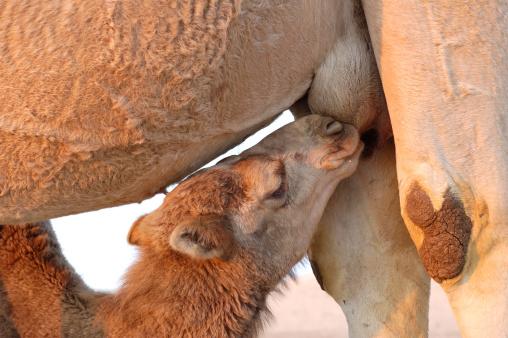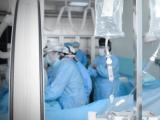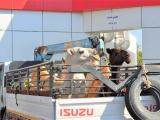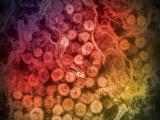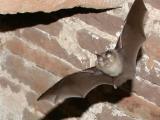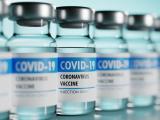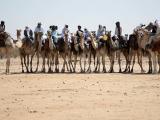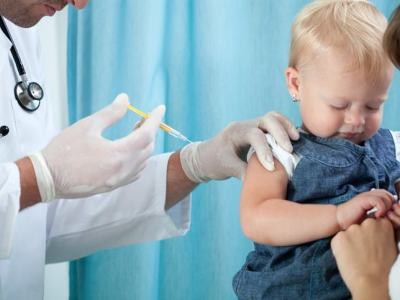In the face of growing evidence that camels may pass MERS-CoV to humans, Saudi Arabian officials announced plans today to test all domestic camels for the virus, according to a media story, and they also reported two more human cases.
In addition, news reports quoted officials in Qatar as saying they found signs of MERS-CoV (Middle East respiratory syndrome coronavirus) in the milk of infected camels, supporting the suspicion that camel milk might provide a pathway for the virus to infect people.
Also today, the European Centre for Disease Prevention and Control (ECDC) said the Saudi disclosure this week of scores of earlier, previously unreported MERS cases and deaths does not change the basic pattern of the outbreak or the ECDC's risk assessment.
Camel testing plan
Saudi Agriculture Minister Fahd Balghuneim said the ministry has begun testing camels for MERS-CoV and next week will start testing "all livestock" in the country for the virus, according to an Arab News story today.
Speaking at a recent workshop in Riyadh on registering livestock, he also said the Saudi Wildlife Authority would test wild animals in nature reserves to determine the prevalence of the virus, the story said.
Balghuneim also noted that imported camels are tested for diseases on arrival in Saudi Arabia, according to Reuters.
Previous news stories have described Saudi camel owners, workers, and even veterinarians as denying or being unaware of any link between MERS-CoV in camels and humans.
Evidence for such a link increased yesterday with a report that a Saudi man who died of MERS-CoV last November might have been infected by the camels he owned. A MERS-CoV isolate from one of the camels matched the strain in the patient.
Evidence of MERS-CoV in milk
In Qatar, a survey by the Supreme Council of Health (SCH) revealed that viral RNA was found in more than half of milk samples from camels that were shedding the virus, according to story today from the Qatar-based Gulf Times.
The information was presented by Salih Ali al-Marri, the council's assistant secretary-general for medical affairs, at a briefing yesterday. He said the national survey was undertaken by SCH and the Ministry of Environment in collaboration with the World Health Organization (WHO) and Erasmus Medical Centre in the Netherlands.
The survey also revealed that all milk samples tested positive for MERS-CoV antibodies, al-Marri said. In addition, 8.7% of people who had close contact with camels had evidence of MERS-CoV antibodies, versus 0% for those with no animal contact or contact only with sheep.
The official did not say whether viable MERS-CoV was found in the milk samples, and the story gave no details on the size or methods of the survey.
A few MERS-CoV patients, such as the patient reported recently in Malaysia, were reported to have drunk camel milk before they got sick. In May, the WHO Collaborative Group on Mass Gathering Medicine said the virus had not been found in camel milk, but advised that it should be boiled before consumption.
In April, US scientists said they had determined experimentally that MERS-CoV could survive for at least 72 hours in camel milk. Other researchers, such as a group from Columbia University in New York, have talked about plans to look for the virus in camel milk and meat.
In other comments noted in the Gulf Times story, al-Marri said evidence of MERS-CoV shedding has been found in camels in various locations in Qatar. "Shedding most frequently occurs from nasal secretions, but approximately 20% of virus-positive animals also shed virus from feces," he said.
Latest Saudi cases
The latest Saudi cases involve an 80-year-old man who is hospitalized in Dilam and a 37-year-old man in Jeddah who has no symptoms and is isolated at home, the Saudi Ministry of Health (MOH) reported in today's update. Dilam is a town about 70 miles southeast of Riyadh, the nation's capital.
Neither man is a healthcare worker, but the update gave no information on how they were exposed to the virus.
The ministry also announced the death of 57-year-old woman in Jeddah whose case was reported previously. She was not a health worker.
The new developments boosted the country's MERS count to 693 cases with 285 deaths, for a national case-fatality ratio (CFR) of 41.1%.
ECDC update
Today's ECDC epidemiologic update on MERS-CoV is the agency's first once since the Saudi revelation on Jun 2 of 113 previously unreported MERS cases and 92 deaths, most of them in the springtime surge of illnesses that began in last March.
"The cases and fatalities reported in batch by Saudi Arabia on 3 June improves the completeness of data but does not significantly change the epidemiological pattern of the outbreak," the ECDC said.
"The new cases have resulted in an increase in the case-fatality ratio [from 33% to 41% in Saudi Arabia], indicating that the observed trend of falling CFR over time can to some extent be explained by incompleteness of data and failure to report outcomes for already notified cases," the agency said.
It added that the new information does not change the ECDC risk assessment released on May 31, which said Europe faces a continued risk of imported MERS cases but that the risk of secondary transmission in Europe is low.
The report puts the global number of MERS-CoV cases as of yesterday at 815, with 313 deaths, for an overall CFR of 38.4%.
Meanwhile, in a statement to CIDRAP News today, ECDC Director Marc Sprenger, MD, PhD, praised the Saudi disclosure of the additional cases, while noting that more information about them is needed.
"I am very positive about the release of the additional data from Saudi Arabia and other recent steps taken by the authorities there. It shows that Saudi Arabia understands the seriousness of the situation," Sprenger commented.
"But basic information about the cases, such as age, gender, residence, probable place of infection, healthcare associated etc, would be beneficial to have in addition to the headline numbers," he added. "It is unclear at this point, for example, whether the retrospective cases reported now meet the WHO case definition or not."
See also:
Jun 5 Arab News story
Jun 5 Gulf Times story on Qatar survey
Apr 8 CIDRAP News story noting study of MERS-CoV survival in camel milk
Jun 5 Saudi MOH statement
Saudi MOH MERS page with case count
